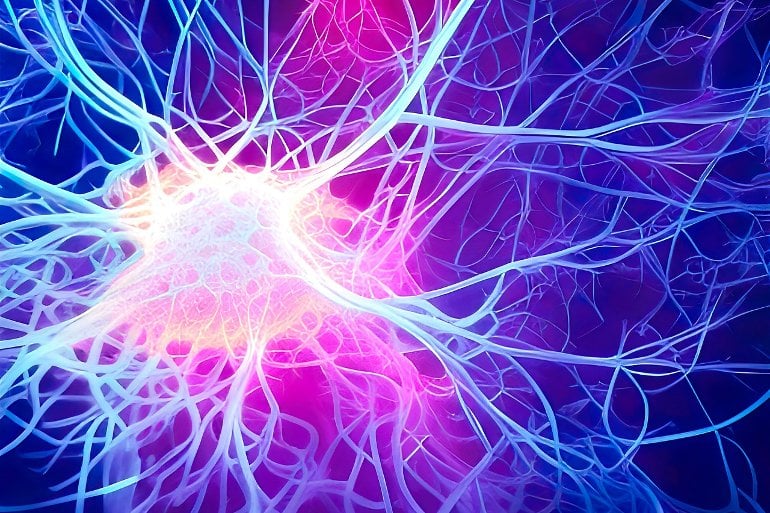Summary: Alterations in the cerebral neural network could function as a biomarker for the early diagnosis of mild cognitive impairment, Alzheimer’s disease, and Lewy Body dementia.
Source: University of Tsukuba
In many neurodegenerative conditions, brain changes occur before symptoms emerge. But now, researchers from Japan have found a new way to distinguish these conditions in the early stages according to changes in brain activity patterns.
In a study recently published in Dementia and Geriatric Cognitive Disorders, researchers from the University of Tsukuba have revealed changes in the cerebral neural network that could function as a biomarker for degenerative neurological conditions such as Alzheimer’s disease and dementia with Lewy bodies—abnormal protein deposits in the brain.
Mild cognitive impairment can be an early symptom of Alzheimer’s disease, cerebral small vessel disease, dementia with Lewy bodies or other neurocognitive disorders. As the clinical course of disease and treatment options vary among these conditions, there is a need to discriminate among them in the early stages, which the researchers at the University of Tsukuba aimed to address.
“Although several biomarkers for mild cognitive impairment have been identified, they generally require specialized neuroimaging equipment,” says senior author of the study Professor Tetsuaki Arai.
“Accordingly, we wanted to use conventional magnetic resonance imaging to compare network deficits in individuals with mild cognitive impairment due to Alzheimer’s and dementia with Lewy bodies.”
To do this, the researchers used a similarity-based approach, which looks for similarities between cortical structures as a measure of brain connectivity. They examined microstructural brain changes in individuals with mild cognitive impairment with Alzheimer’s, those with mild cognitive impairment with Lewy bodies, and control participants.

“The results were surprising,” explains lead author Professor Miho Ota. “In patients with mild cognitive impairment with Alzheimer’s, we found significant network abnormalities in specific regions of the brain. In patients with mild cognitive impairment with Lewy bodies, we found similar changes but in other parts of the brain. No such abnormalities were found in the control participants.”
Furthermore, these changes were present before disease-related changes in gray matter volume.
“Our findings indicate that it is possible to identify disease-related changes in neural networks in patients with mild cognitive impairment with Alzheimer’s and those with mild cognitive impairment with Lewy bodies using a similarity-based approach, and to discriminate the two conditions according to the brain regions in which these changes are found.
“Accordingly, network images derived using this approach may be superior to gray matter volume images, which are conventionally used, for detecting subtle microstructural brain changes,” says Professor Arai.
Given the relative availability of conventional magnetic resonance imaging devices at medical facilities, network imaging could be a more accessible method of assessing and comparing brain structures in individuals with mild cognitive impairment due to Alzheimer’s and those with mild cognitive impairment with Lewy bodies.
About this dementia research news
Author: Press Office
Source: University of Tsukuba
Contact: Press Office – University of Tsukuba
Image: The image is in the public domain
Original Research: Closed access.
“Structural Cerebral Network Differences in Prodromal Alzheimer’s Disease and Prodromal Dementia with Lewy Bodies” by Miho Ota et al. Dementia and Geriatric Cognitive Disorders
Abstract
Structural Cerebral Network Differences in Prodromal Alzheimer’s Disease and Prodromal Dementia with Lewy Bodies
Introduction: Alzheimer’s disease (AD) and dementia with Lewy bodies (DLB) have long prodromal phases without dementia. However, the patterns of cerebral network alteration in this early stage of the disease remain to be clarified.
Method: Participants were 48 patients with mild cognitive impairment (MCI) due to AD (MCI-AD), 18 patients with MCI with DLB (MCI with Lewy bodies: MCI-LB), and 23 healthy controls who underwent a 1.5-Tesla magnetic resonance imaging scan. Cerebral networks were extracted from individual T1-weighted images based on the intracortical similarity, and we estimated the differences of network metrics among the three diagnostic groups.
Results: Whole-brain analyses for degree, betweenness centrality, and clustering coefficient images were performed using SPM8 software. The patients with MCI-LB showed significant reduction of degree in right putamen, compared with healthy subjects. The MCI-AD patients showed significant lower degree in left insula and bilateral posterior cingulate cortices compared with healthy subjects. There were no significant differences in small-world properties and in regional gray matter volume among the three groups.
Conclusions: We found the change of degree in the patients with MCI-AD and with MCI-LB, compared with healthy controls. These findings were consistent with the past single-photon emission computed tomography studies focusing on AD and DLB. The disease-related difference in the cerebral neural network might provide an adjunct biomarker for the early detection of AD and DLB.






